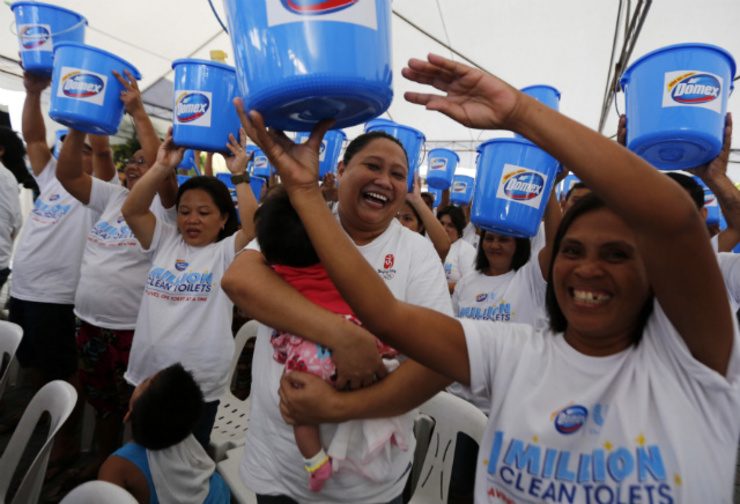SUMMARY
This is AI generated summarization, which may have errors. For context, always refer to the full article.

MANILA, Philippines – Last Saturday morning, November 15, Sam Treglown was on his way to Barangay (Village) 105 in Tondo, Manila, when he saw by the side of the road a woman squatting down by the drain and trying to cover herself while defecating in public.
“She had two boards, one on the side, and one on the back, and she was trying to create some privacy, some dignity for herself as she went to the toilet right by the roadside. Maybe some of us have seen that situation before; it’s not an isolated incident,” Treglown, a Water, Sanitation and Hygiene Specialist of the United Nations Children’s Fund (UNICEF), shared during World Toilet Day on Wednesday, November 19.
In the Philippines alone, an estimated 7 million people or 1 in 14 people still practice open defecation. (READ: 55 die daily in PH from lack of proper sewerage)
While the country is better than the world average (1 in 7 people), Treglown said open defecation remains both a public health problem, and a safety and dignity problem for women and girls.
On Wednesday, UNICEF, along with Unilever and the city government of Manila, celebrated World Toilet Day at the Baseco Compound in Tondo, Manila, with the theme “Equality and Dignity.”
One household, one toilet
Barangay 649 Chairman Kristo Hispano said for a population of about 52,000 individuals or 10,000 families, only 30% to 40% of households in the barangay have toilets.
In Unilever Vitality Village, the venue of Wednesday’s event, he estimated about 2 families or 8 to 12 persons share a toilet.
But Treglown said that in order for a toilet to be sustainable, it should be owned and used by one household or 5 persons – the average size of a Filipino family.
“The rationale behind that is [that] it’s their toilet, and therefore they would look after it and keep it clean, and they will be motivated to build it,” he explained.
Generally, rural areas have lower access to toilets than urban areas. Across the Philippines, Treglown said poorer households in the bottom quintile are less likely to have access to toilets, while Eastern Visayas and Central Mindanao as two regions with the lowest access to toilets.
Target: 2028
The Philippines aims to achieve universal access to safe and adequate sanitary facilities by 2028.
Treglown said the good news is that 86 barangays (with a population of over 180,000) in Samar, Leyte, Masbate, and Central Mindanao already achieved open defecation-free status. (READ: Masbate’s barangay folks lead sanitation efforts)
Unilever’s One Million Clean Toilets Movement launched in 2013 also received a total of 1,274,038 pledges nationwide.
The goal for 2015 is to teach one million people about effective household toilet sanitiation, because as Treglown said, it shouldn’t stop in just giving out toilet bowls.
“Each story of improved sanitation has in it a story of improved health, improved dignity, and improved equity,” he said. – Rappler.com
Add a comment
How does this make you feel?
There are no comments yet. Add your comment to start the conversation.